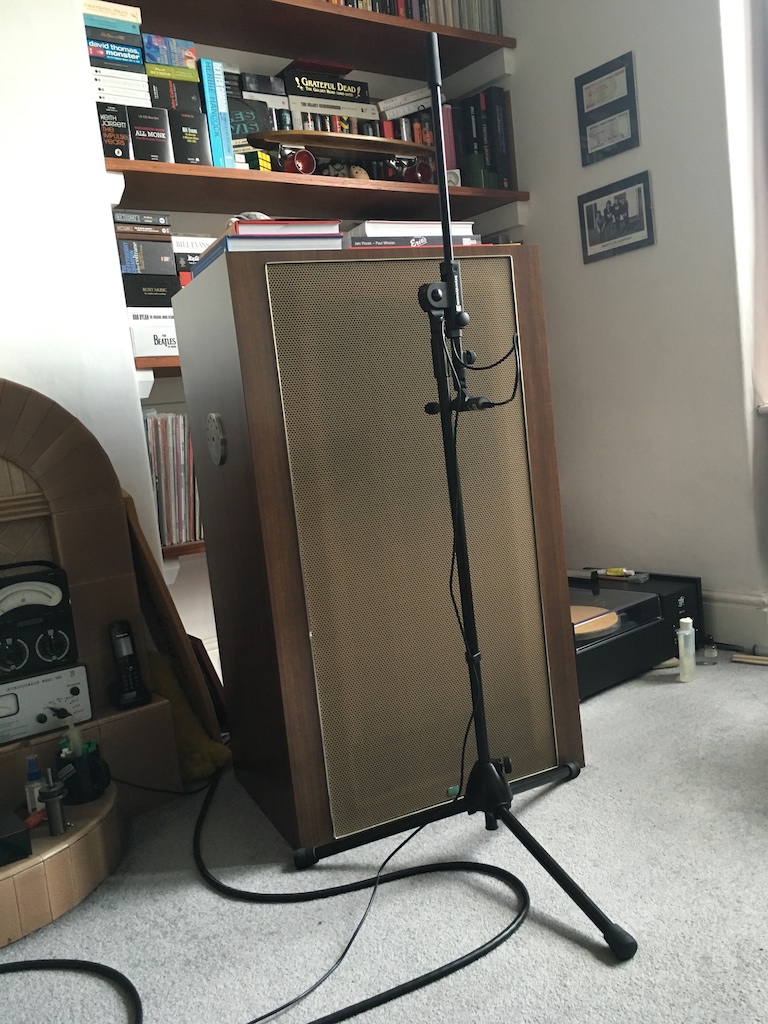ToTo Man
the band not the dog
I'm not familiar with your measurement software so wouldn't know how to configure the settings so that the comb-filtering is easier to see. I use RoomEQWizard with a 50dB scale spanning 40dB-90dB and 1/48 octave graph smoothing.Thank you all for your inputs and insights. This is really helpful.
I have a Dayton audio mic which I was able to attach to my phone and run some frequency sweeps.. some in cabinets, some with just the driver outside the cabinets.

Would this suffice or do I need something more precise? I measured about 2 inches away from the cabinets and drivers. Is that too close?
Here's one of the sweeps of either Silver or Red driver (I don't recall) outside the cabinet. Do I measure both the drivers and compare the graphs for close match as well as for the comb-filtering?

And speaking of quirks with the vintage Tannoys, my pair of Reds come from a mint pair of Daltons. These speakers are quite special as in they severely lack in bass however the vocals and highs on these are to die for. Now the quirk is, even though these were sold as a pair to the original owner (I'm the 3rd owner). One driver has an Orange dust cap and the other has a Black dust cap. The original owner never opened the cabinets and didn't even know they were different. To my ears they sound the same. Does anyone know if there are any audible differences between these early Reds and later Reds?
Daltons:

Reds from Daltons:

Regardless of what equipment you use to measure, to assess pair matching it's vital to keep all test variables constant. I'd strongly recommend keeping the mic in a fixed location and bringing each driver over to it, one at a time, making sure the driver is placed at exactly the same location and angle as the other driver was. Measuring at 1 metre distance or from your listening seat is fine for this, if you get too close then you risk measuring artefacts from the pepperpot that are not audible at normal listening distances.
To be honest, unless you're OCD about this kind of stuff I wouldn't worry about it, - some ears are more sensitive to the "dual-concentric sound" than others. If both drivers are well-matched and the treble sounds open and clear and you don't notice a 'choppy' quality in the decay of high frequency harmonics then you can relax and stop looking for problems!






